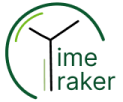How to Increase Employee Engagement in the Workplace

The world of business today is highly competitive, so understanding how to increase employee engagement in the workplace for success. Businesses that ensure they engage their employees experience increase in productivity, unity within the company as well as upper rates of employee turnover. In order to address this, organizations may use the recommendation of using employee management software, applying improved work engagement approaches, and cultivating a culture which supports the development of quality rapport and dedication. Time Traker is a critical tool that offers business owners meaningful statistics for improving interaction in the workplace.
Problem: The Struggle with Employee Engagement
Lack of engagement of employees is now becoming rampant in many organizations cutting across industries. Data from the Gallup polling organization indicates approaches a shocking 70% of workers in America express that they are not enthusiastic at their jobs. Such factors can include a lack of communication with managers or co-workers, lack of appreciation, lack of clear goals as well as lack of promotional opportunities. Such workers may post low performance levels, translate to high turnover rates that demoralize morale and productivity within firms.
Agitation: The Cost of Disengagement
It points to the fact that companies which lack a coherent EE policy suffer severe repercussions. Employees who are not committed to their jobs are less effective, possibly leave, and take longer to be replaced. The outcome is a high turnover rate, low cooperation between employees, and, most importantly, extensive losses. Additionally, the employees who are not engaged are not motivating others to get engaged and may even spur a poor attitude in the workplace. When the work engagement cannot be enhanced, the lose is opportunity and consequently, business outcome.
Solution: Proven Strategies to Increase Employee Engagement

To combat these challenges, businesses must implement practical and measurable strategies. Here are proven methods to increase employee engagement in the workplace:
1. Foster Open Communication
Many a time, it is important to keep your employees informed through clear communication. Employees should be convinced they are important, and the information they provide is valued. Setting up weekly or bi-weekly meetings between the managers and employees creates a formal work related environment for questions and concerns to be addressed. Engagement surveys also allow the Companies to gather anonymous data and determine the degree of satisfaction. Such data shall assist the HR teams notice trends and possible improvements that can be made resulting to change.
2. Provide Opportunities for Growth
Work and career representation has a central role to play in employee Commitment. If the employees in the organization feel that there is a possibility of advancement within the company, they will always be eager and devote their time to the company’s work. As a result to some extent engagement can be enhanced by developing programs that offer skills, leadership and mentoring programs.
In LinkedIn’s 2023 Workforce Learning Report the study shows that if employees ensure that the organizations they work for are willing to train them, 94% stated that they will remain loyal to the organizations. Thus, professional development should be regarded as the central element of the engagement strategy for businesses.
3. Recognize and Reward Achievements
In their work context, it is significant to appreciate employees’ achievements regardless of whether they are major or minor in developing a good working culture. Recognition in public with incentives like offering bonuses, or paid holidays also ensures that employees are appreciated. Firms that opt to monitor their employees’ performance with the help of the employee management software and then motivate them based on the results they post have higher employee satisfaction and turnover rates.
4. Promote Work-Life Balance

An essential factor in maintaining engagement in the workplace is promoting a healthy work-life balance. Encouraging employees to take breaks, use vacation time, and avoid burnout leads to a more productive workforce. Offering flexible working hours or remote work options can also enhance job satisfaction.
Time Traker: A Tool to Measure and Improve Employee Engagement
Key features of Time Traker include:
- Effortless Time Tracking: Automatically track employees’ work hours, ensuring accurate payroll and insight into productivity levels.
- Seamless QuickBooks Integration: Time Traker integrates smoothly with accounting software like QuickBooks, simplifying payroll management.
- Performance Analytics: The software offers detailed reports on employee performance, helping managers understand how engaged each team member is.
- Customizable Timesheets: Employees can easily log their hours and track their tasks, providing transparency for both employees and management.
- Expense Tracking: Track employee expenses to ensure efficient financial management across the organization.
These features, combined with employee management software, empower HR departments to fine-tune their strategies and create a more engaged workforce.
Case Study: How a Tech Company Improved Employee Engagement
A mid-sized tech company faced high turnover rates and low productivity due to employee disengagement. After implementing Time Traker and conducting regular engagement surveys, they discovered that a lack of career growth opportunities was a major issue. By introducing leadership training programs and providing clearer career advancement paths, the company saw a 25% improvement in engagement levels within six months. Additionally, workforce retention increased by 15%, leading to greater overall team productivity and reduced hiring costs.
This example illustrates how a focus on how to improve employee engagement can lead to tangible business results. Through data-driven insights, companies can better understand their employees’ needs and tailor their approaches to boost satisfaction.
Practical Tips to Improve Employee Engagement
If you’re looking for more specific strategies on how to increase employee engagement in the workplace, consider the following:
1. Encourage Team Collaboration

Teams that collaborate effectively are often more engaged. You can promote teamwork by organizing group projects, team-building exercises, or cross-departmental collaboration initiatives. This not only improves engagement but also fosters creativity and problem-solving.
2. Use Technology to Streamline Processes
Investing in the right tools, such as employee management software, can significantly reduce administrative burdens and allow employees to focus on meaningful tasks. Software that automates payroll, scheduling, and performance reviews frees up time for innovation and productivity.
3. Set Clear and Achievable Goals
Unclarities that arise from goal ambiguity generate frustration and disengagement. Often remind the organizational goals, and also each worker should know where he or she fits into the big picture. By employing the use of such tools like the Time Traker. The managers can be in a position to know the progress made, and see where changes need to be made in order to ensure the employees are on board with the business goals.
Conclusion
Understanding how to increase employee engagement in the workplace is more important than ever in today’s competitive business landscape. By fostering open communication, providing growth opportunities, recognizing achievements, and promoting work-life balance, companies can create an environment where employees feel valued and motivated. Moreover, using tools like Time Traker and employee management software can provide valuable insights that help businesses maintain high levels of engagement.
A focus on employee engagement is not only beneficial for employee satisfaction but also for long-term business success. By applying these strategies and leveraging modern tools, businesses can build a more motivated, loyal, and productive workforce.
